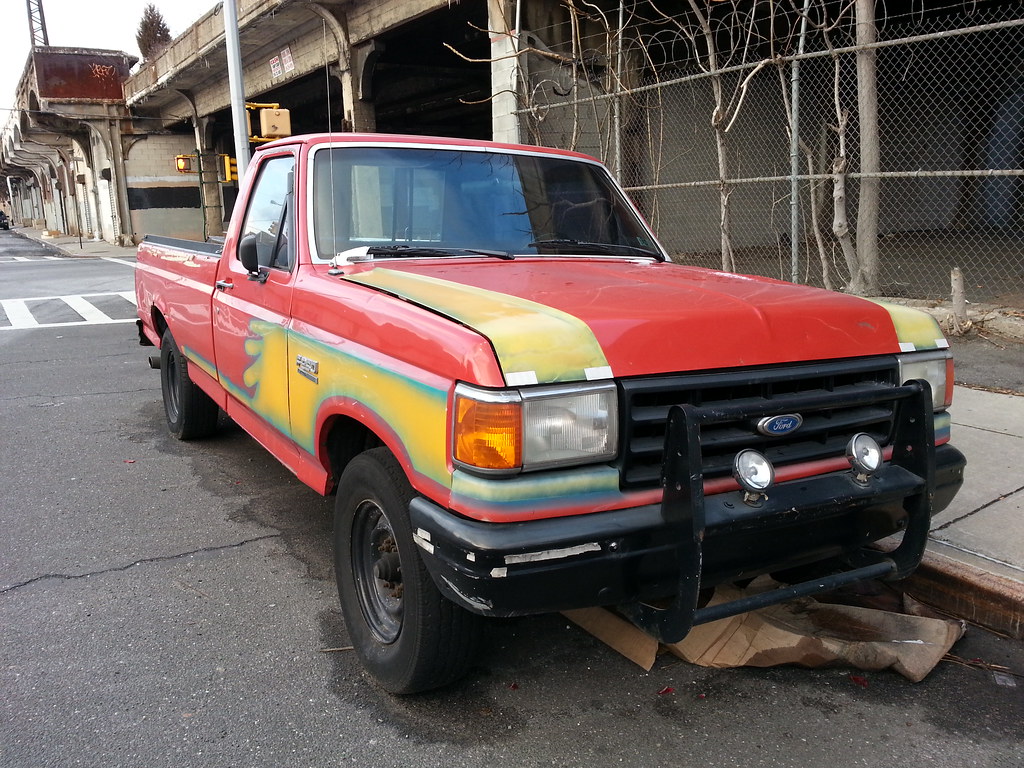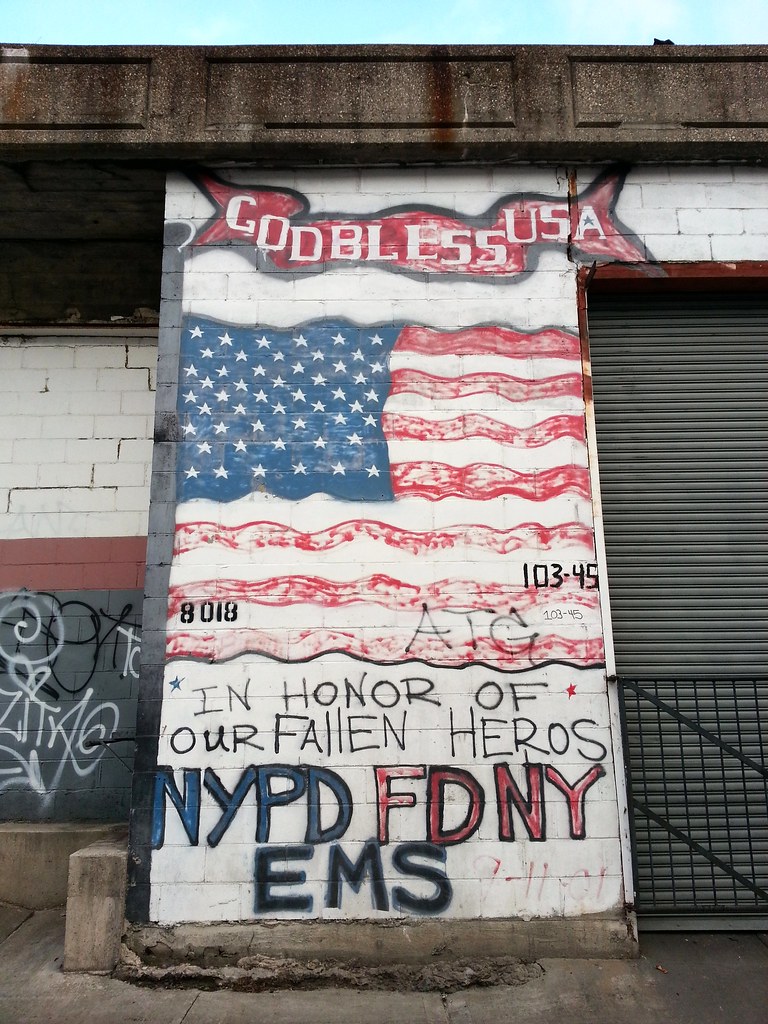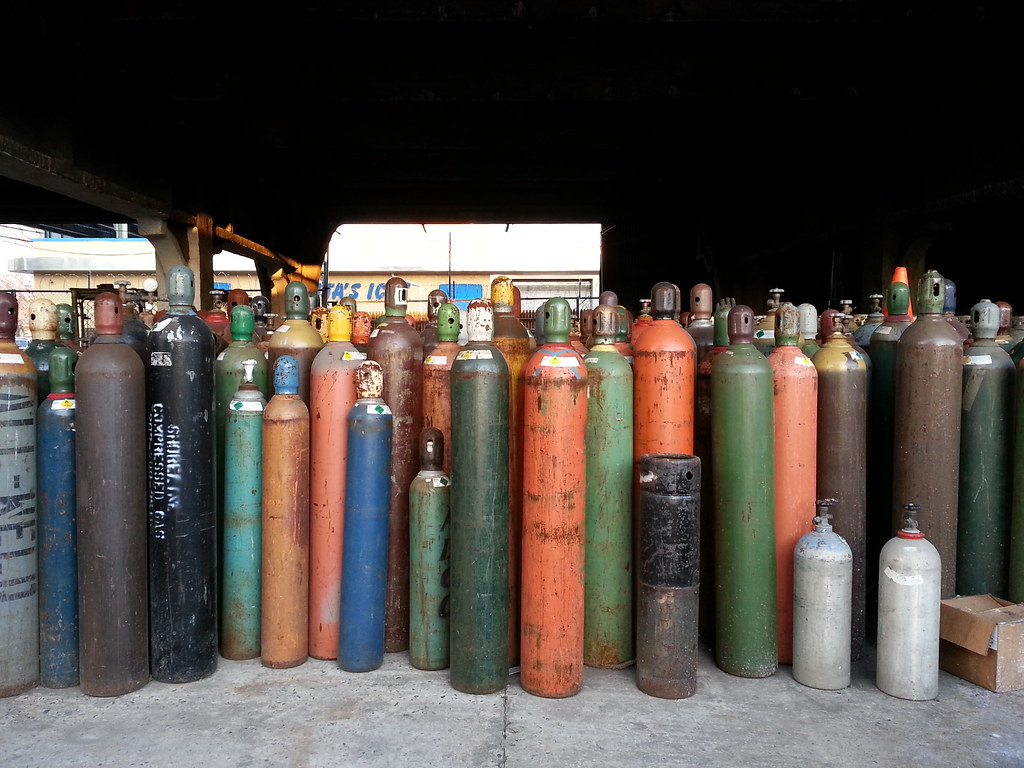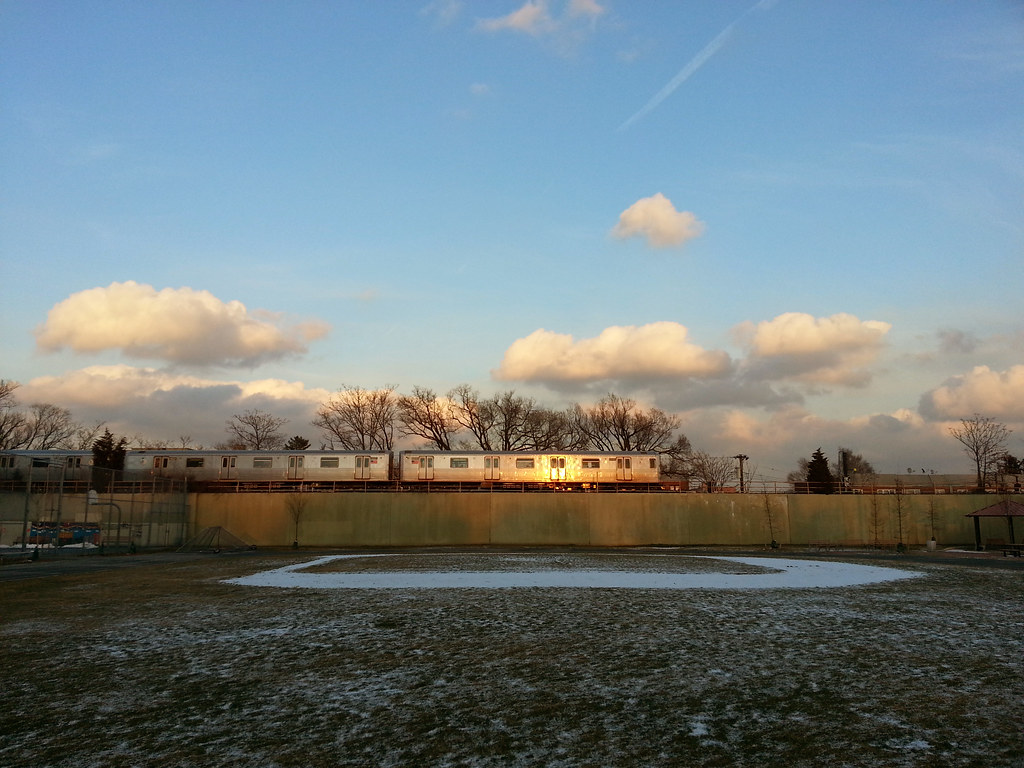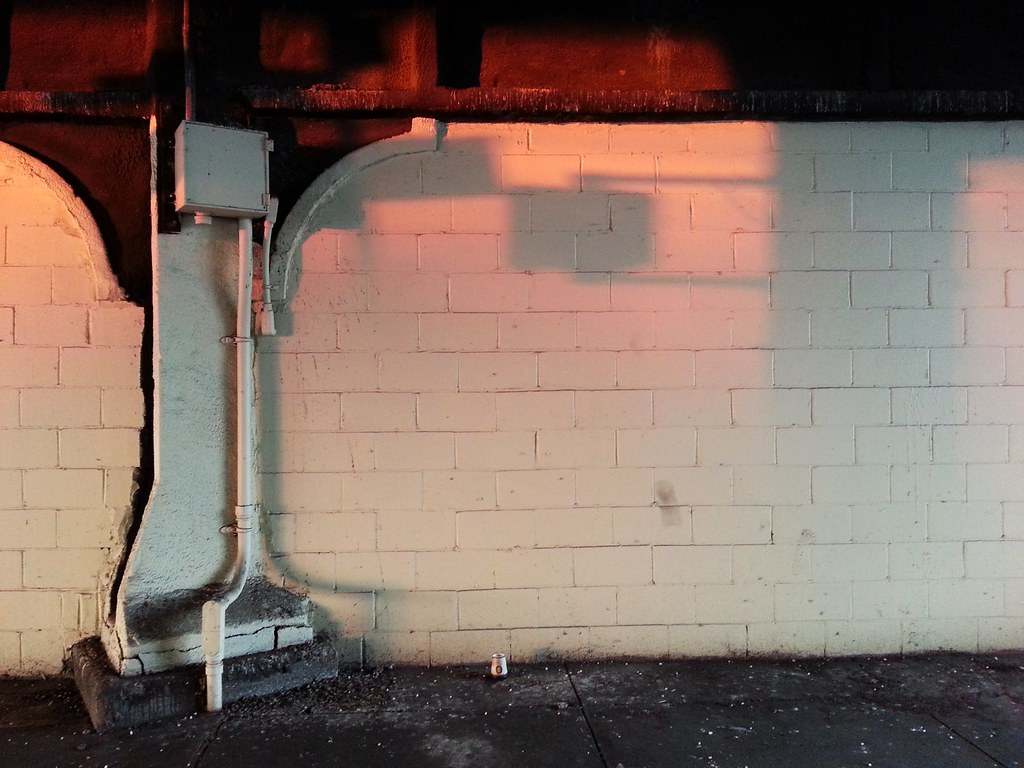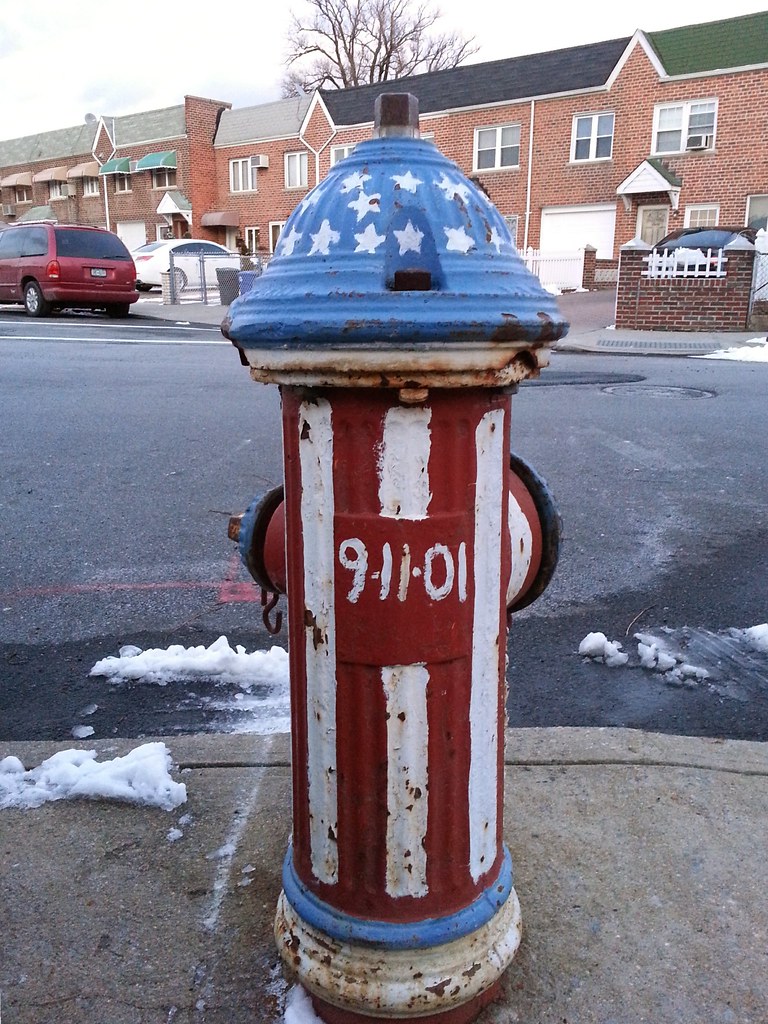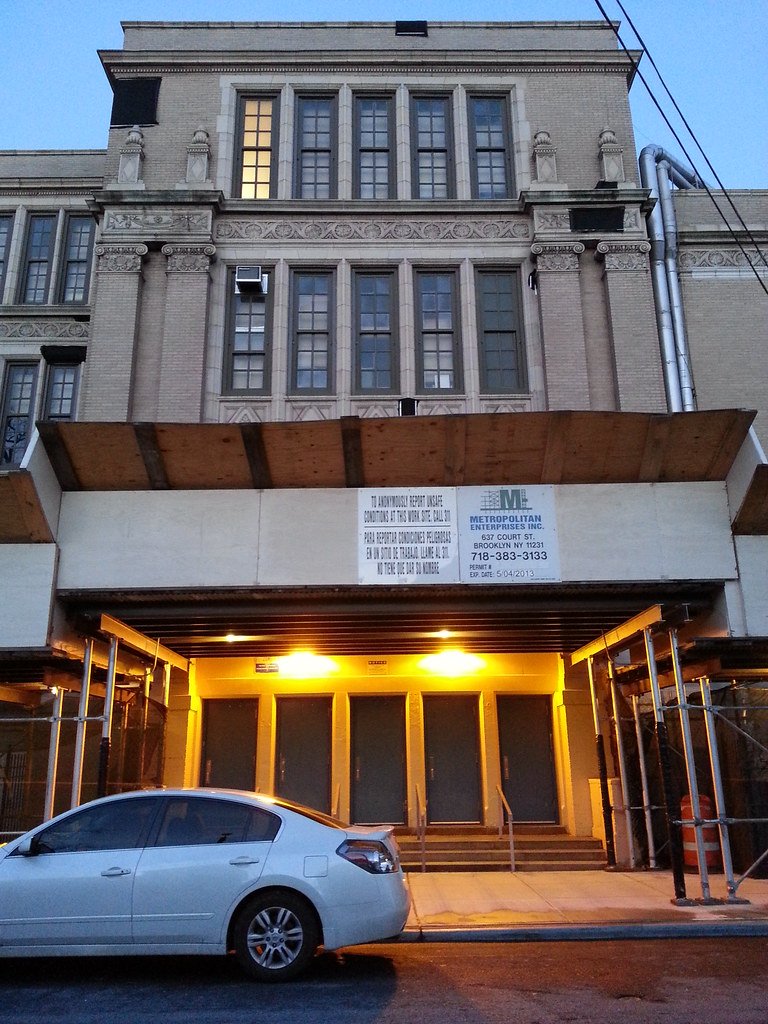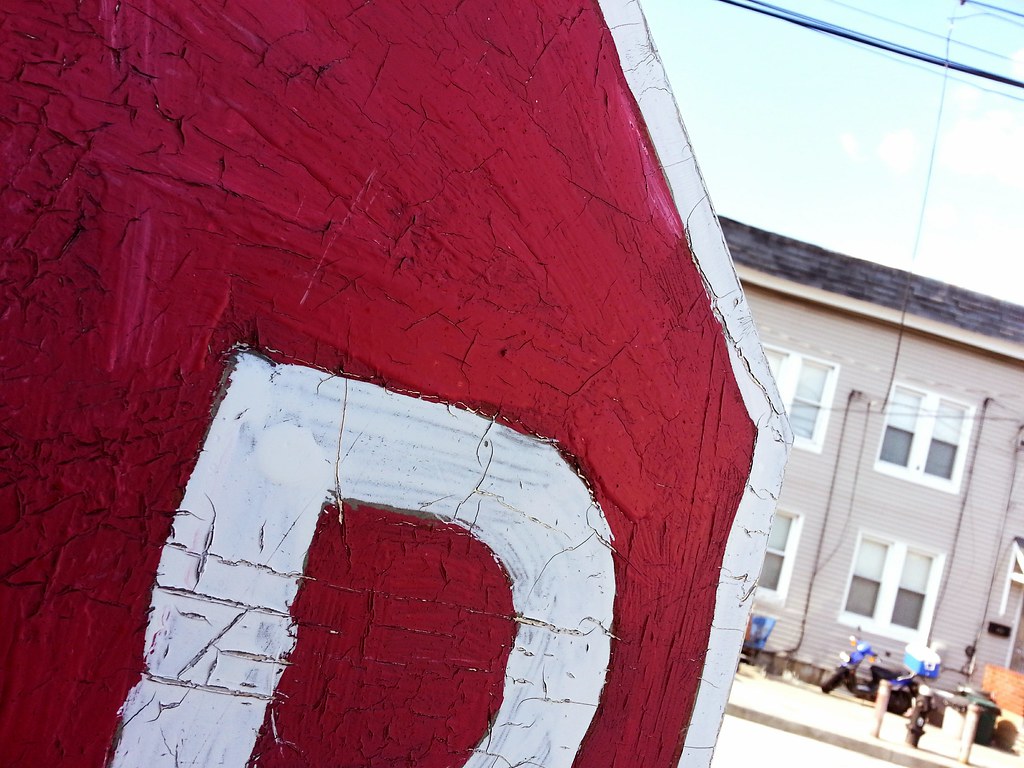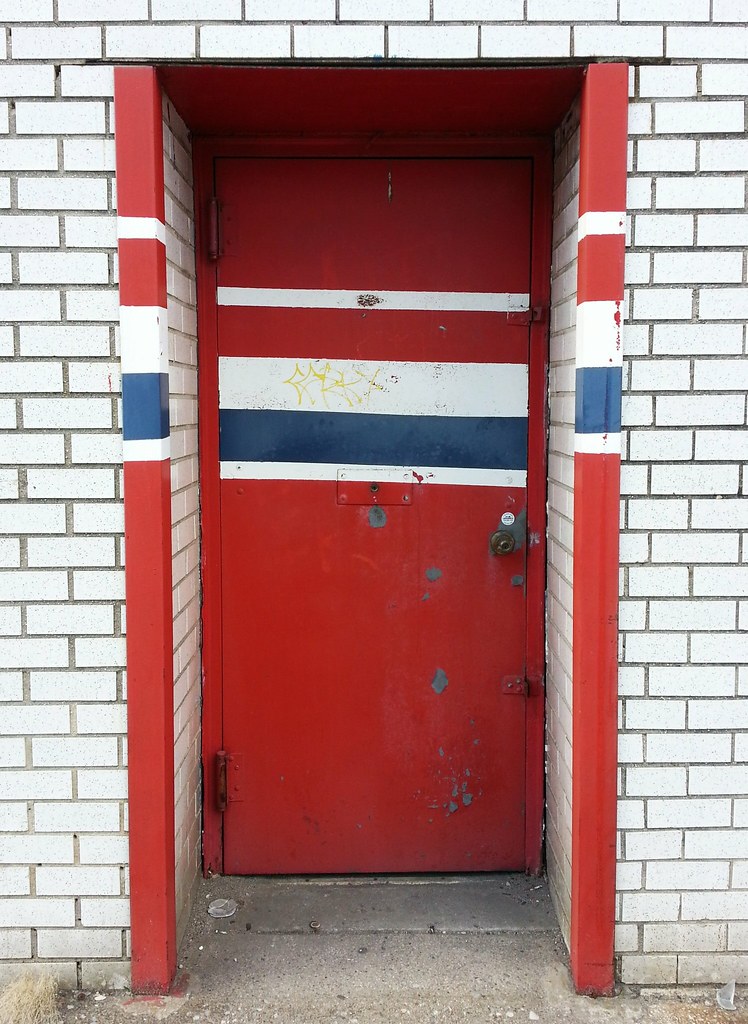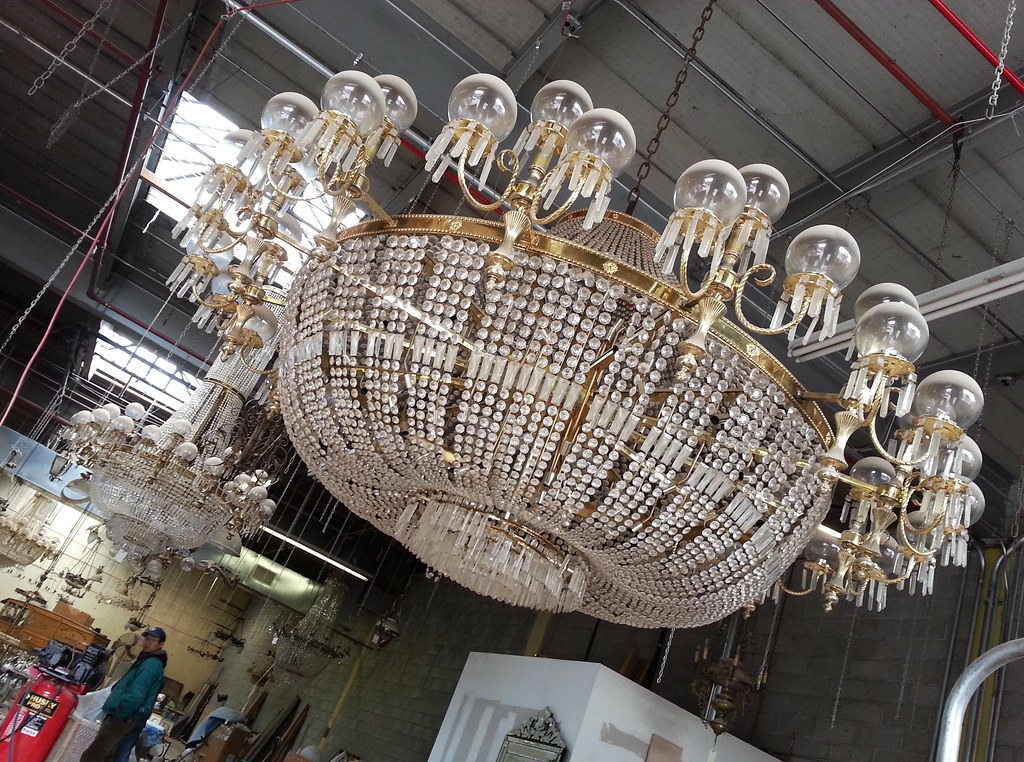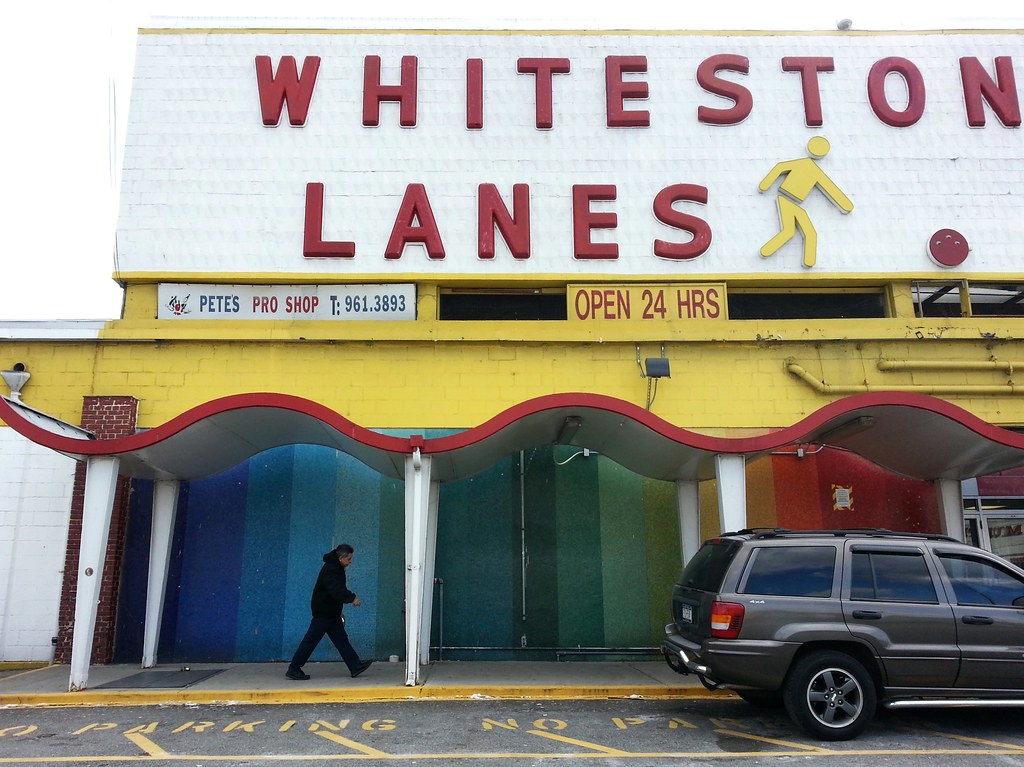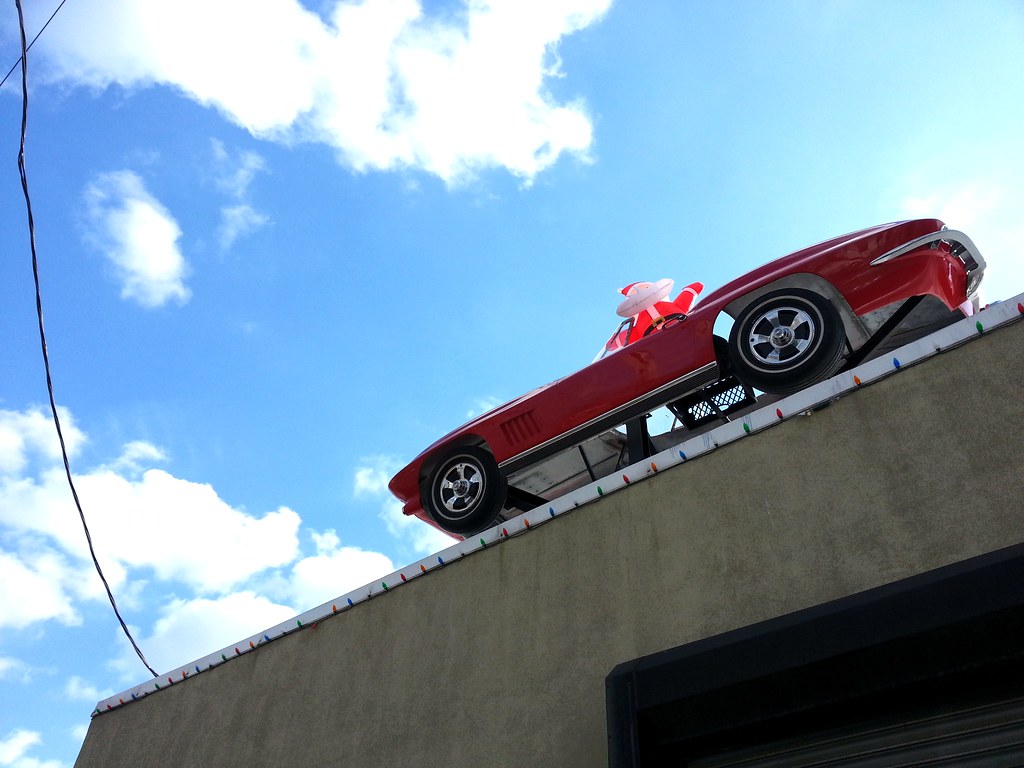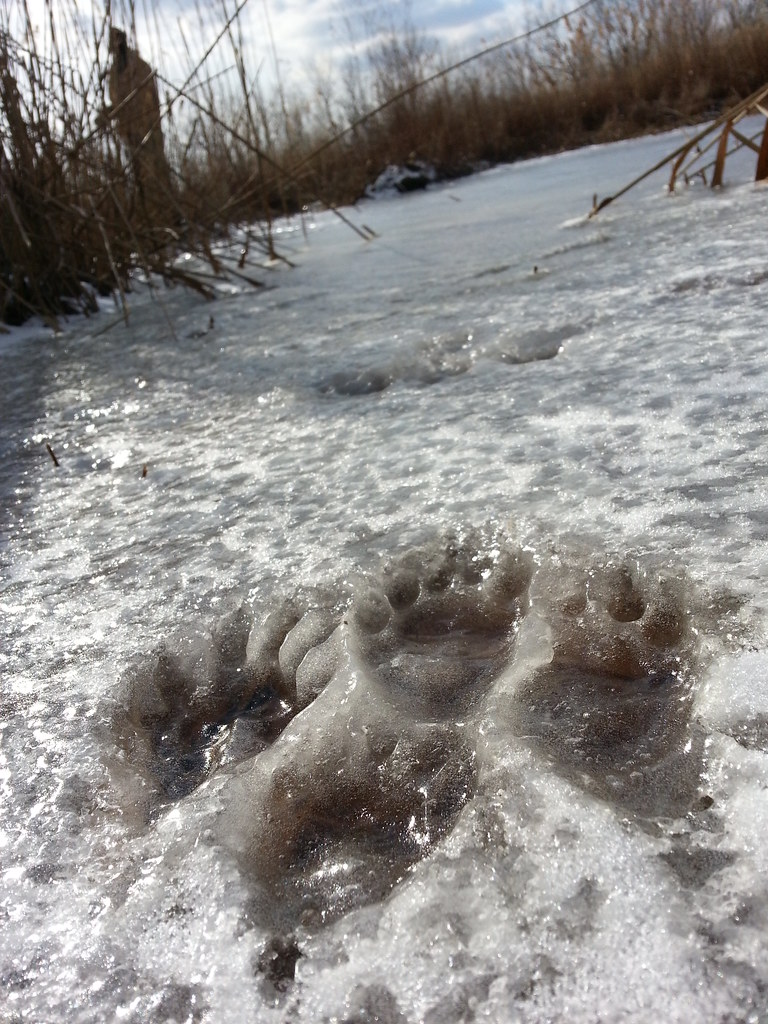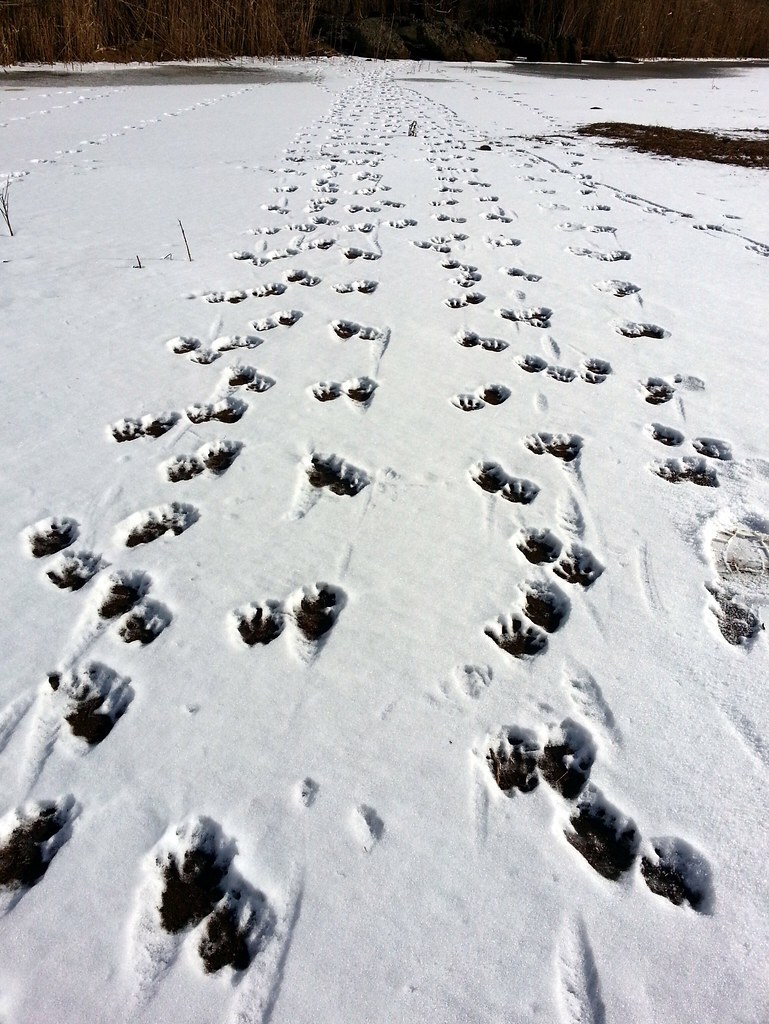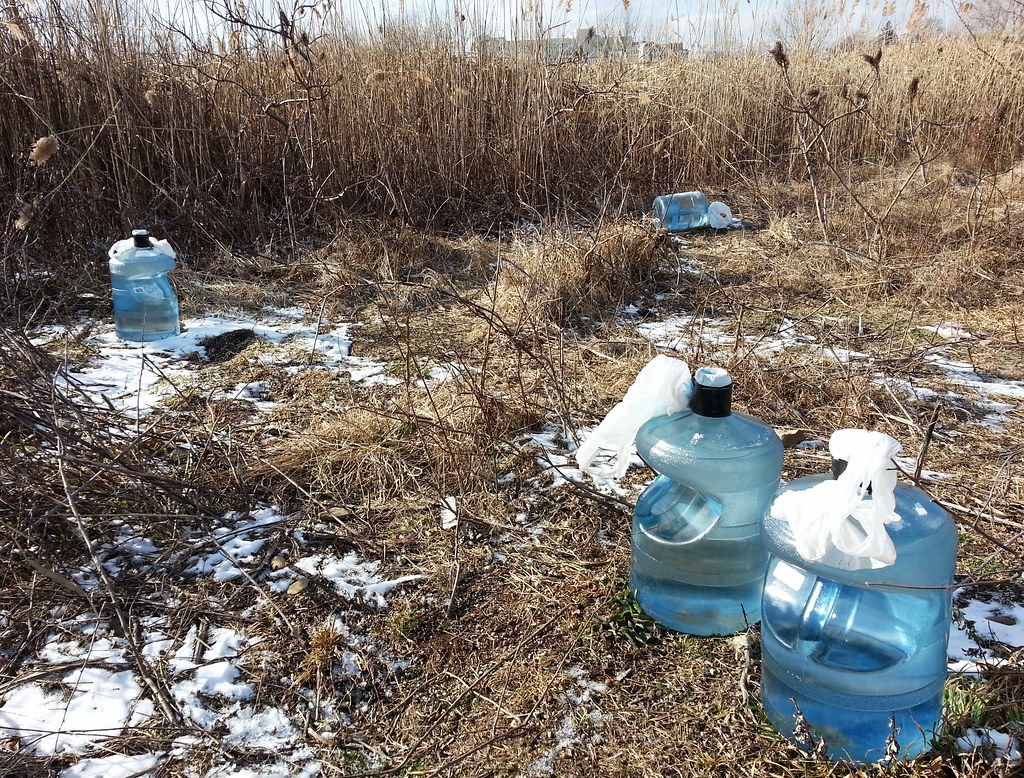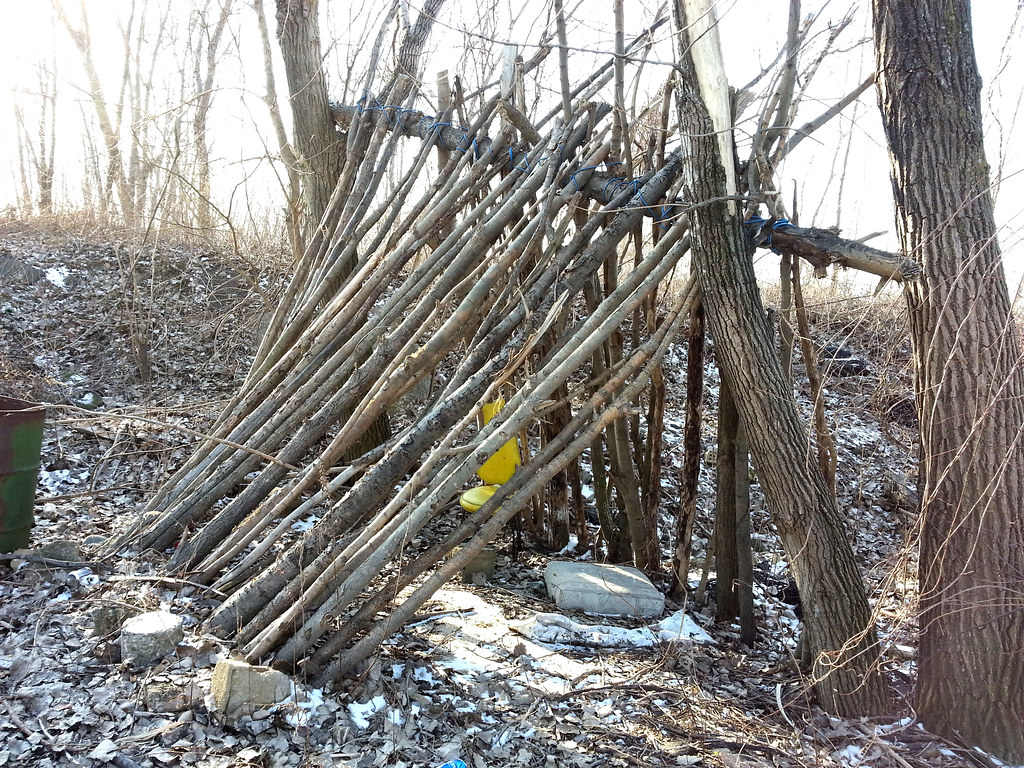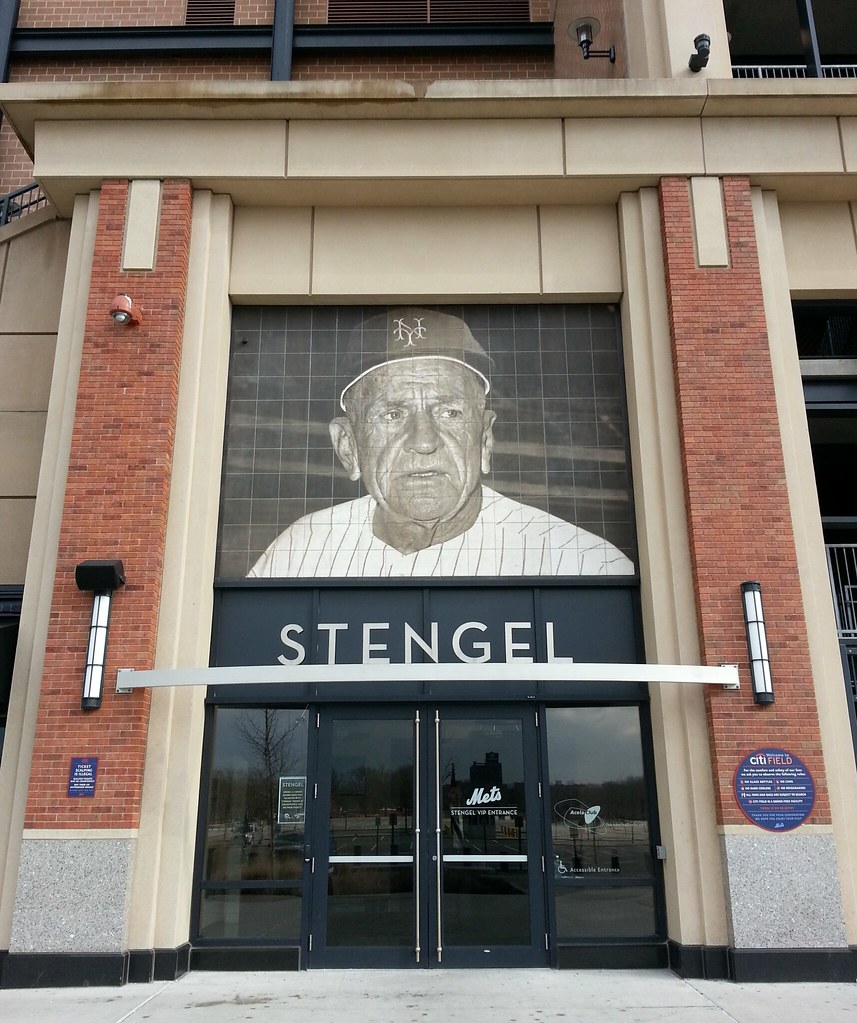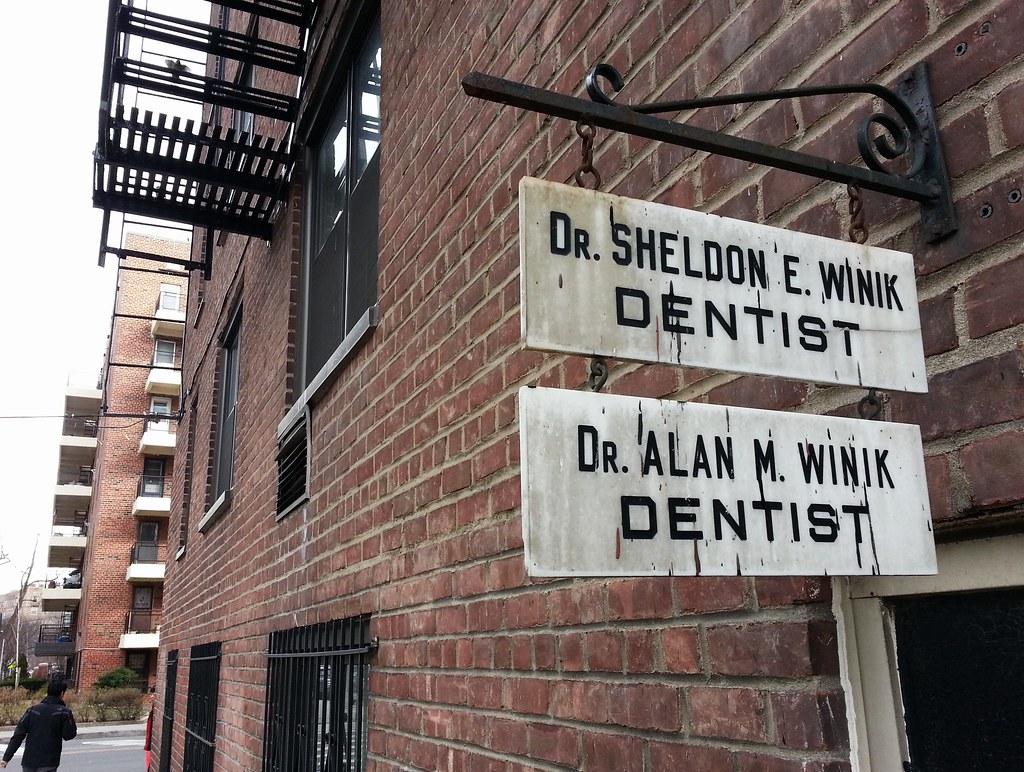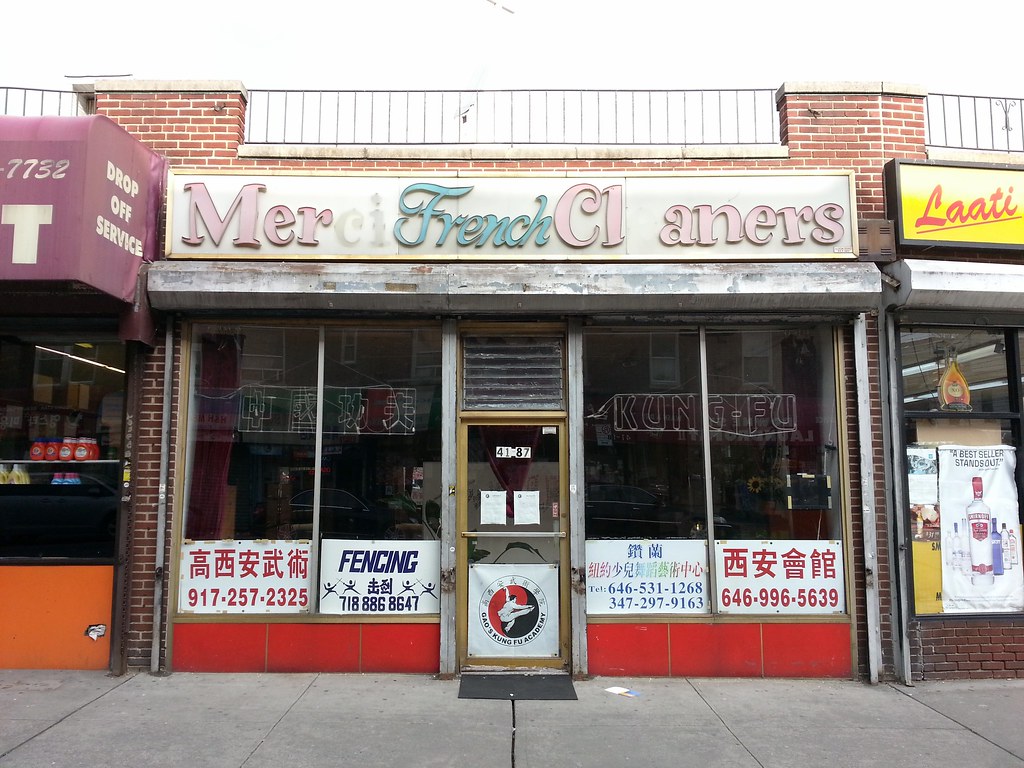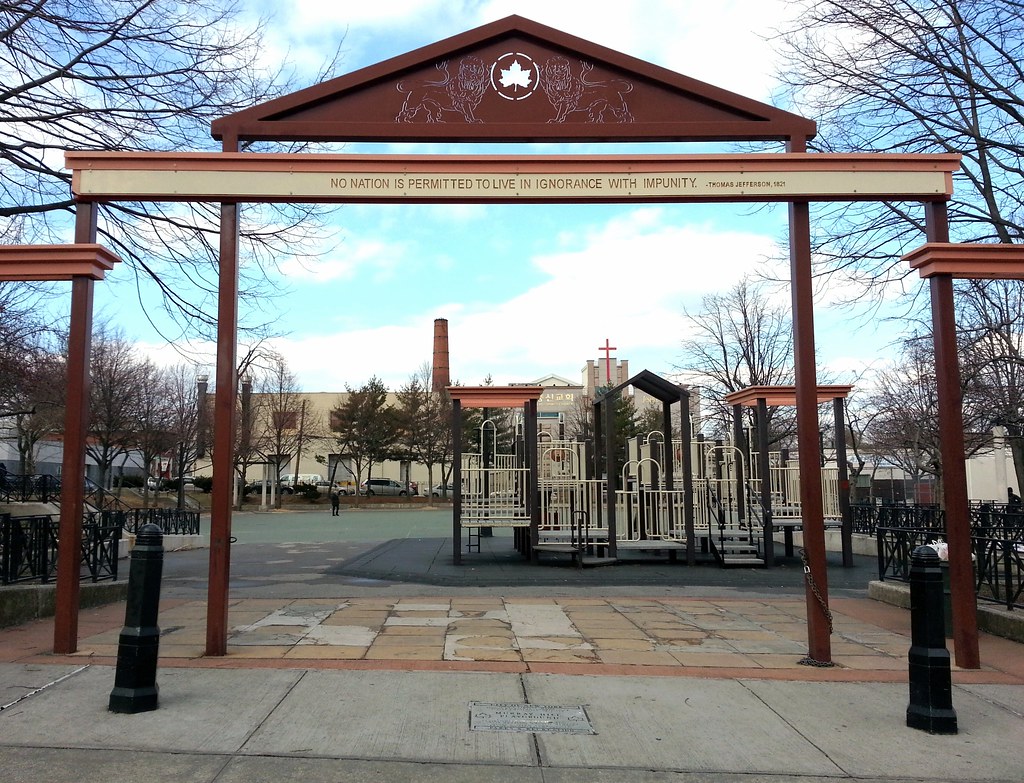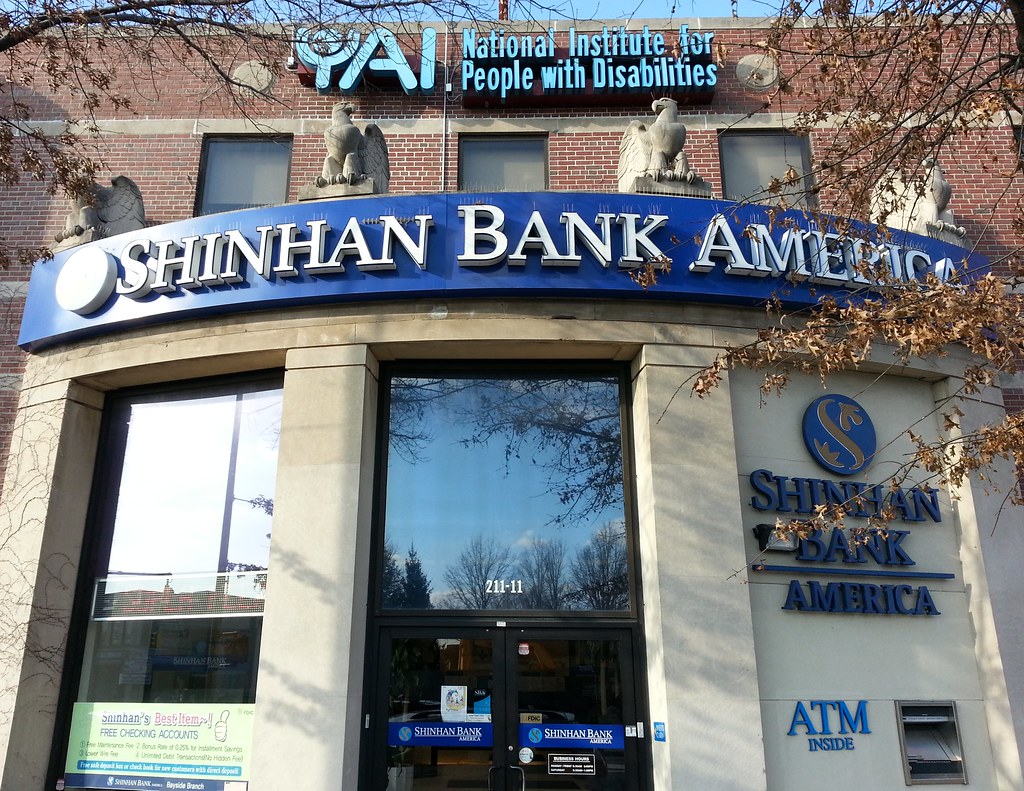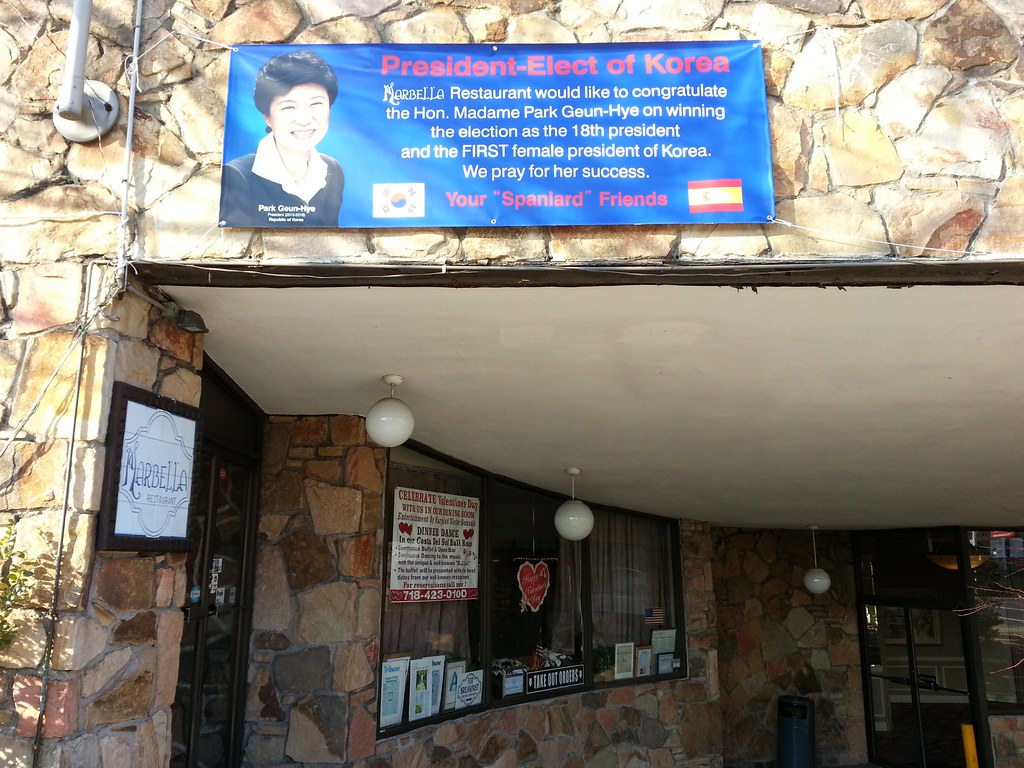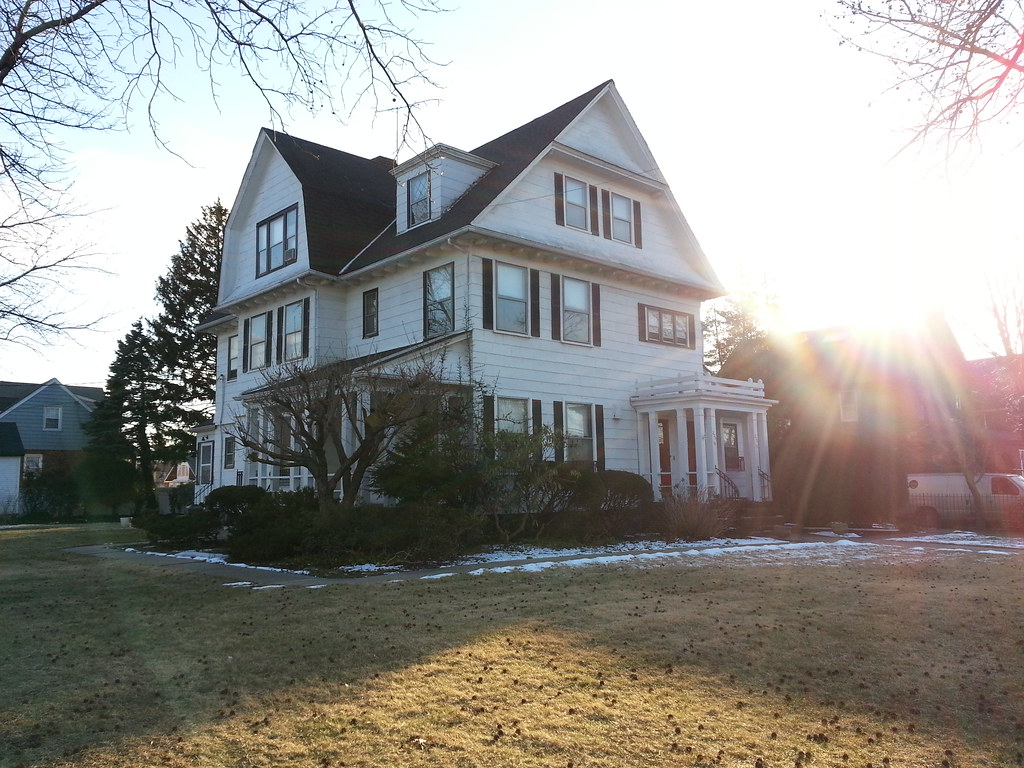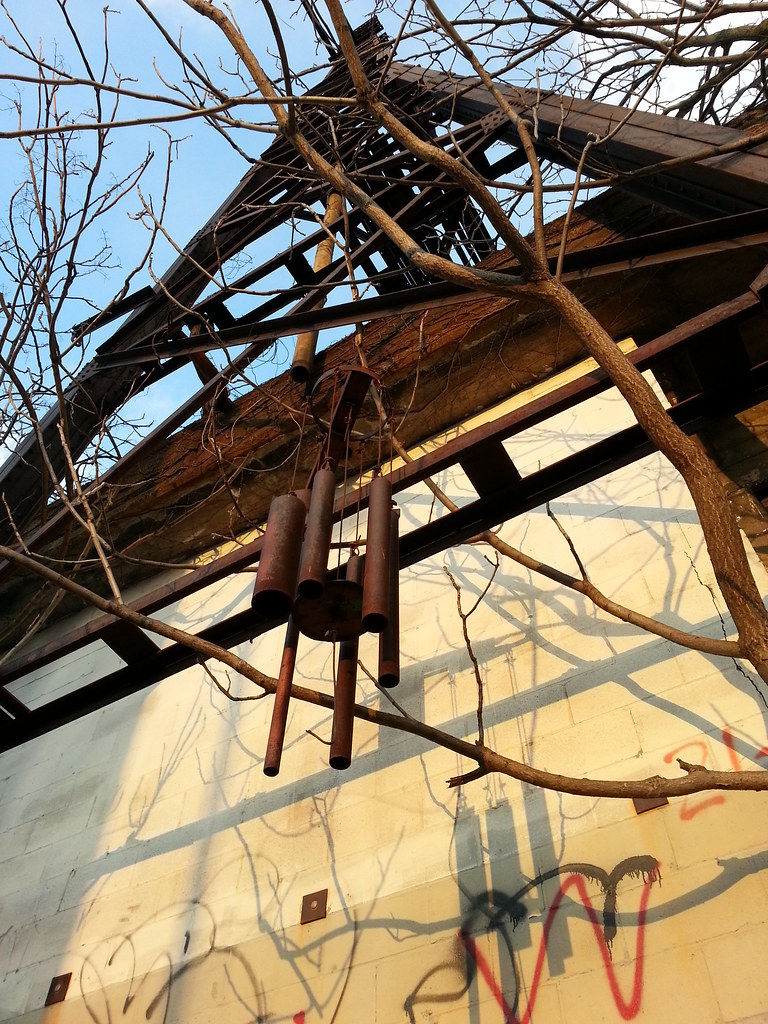
Dangling from an old utility tower on the abandoned Rockaway Beach Branch

This strange little misspelled, π-shaped court, located off Prince Street in Flushing, is named for William Prince Jr.'s famed 19th-century nursery, the Linnaean Botanic Garden, itself a namesake of the Swedish naturalist — and "genius of genuses" — Carl Linnaeus. The garden, part of which stood on this site, was an outgrowth of one of the first large commercial plant nurseries on the continent, established here in Flushing in the 1730s and brought to great renown by Prince's father. George Washington paid a visit in the 1790s, as did Thomas Jefferson, who ordered a number of plants to be shipped to his Virginia home, Monticello. Many of the "botanical treasures" collected by Lewis and Clark were sent to the junior Prince to be propagated.
By the mid-1800s, other nurseries had sprung up in Flushing, most notably those of the Parsons family, reaffirming the area's status as one of the country's foremost centers of horticulture. Traces of this history can be found today on the local street signs. In addition to Linneaus Place and Prince Street, there is a Parsons Boulevard. There are also a slew of streets named for trees and plants, most of which belong to a series of avenues running alphabetically from Ash down to Rose.
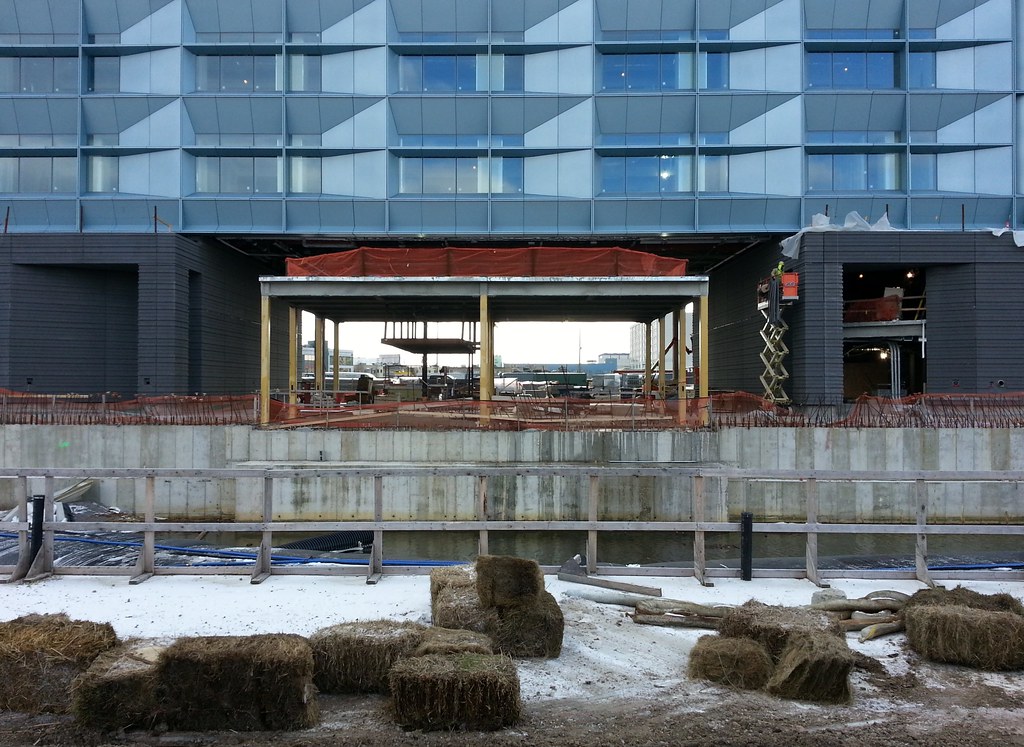
The city is erecting a new billion-dollar police academy in College Point. The pictured structure is going to be the academic building; as you can see in this wide shot, it appears to be nearing completion.
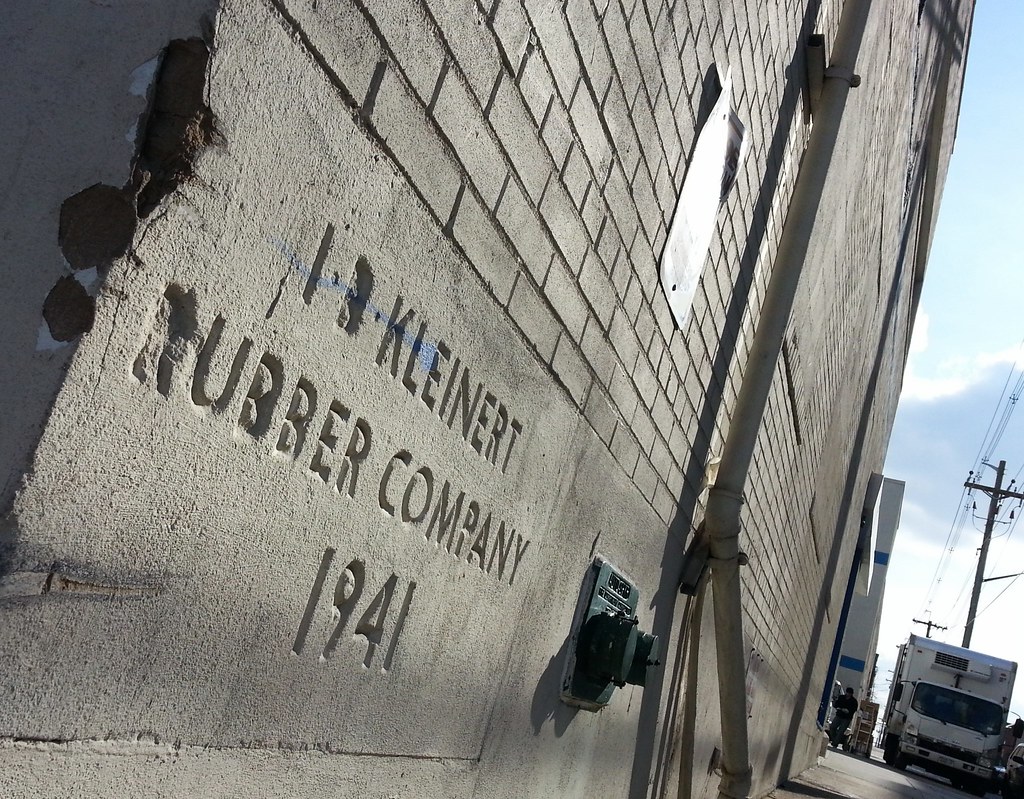
Our old friend Conrad Poppenhusen established a rubber factory in College Point in the 1850s; within a couple of decades, a number of other rubber men had set up shop in town, including Isaak Kleinert, who seems to be mostly remembered for a dress shield he developed. Kleinert's still exists today, now headquartered in Alabama, and bills itself as "the world's authority on sweat protection". I wonder if they've also maintained their position as "makers of America's finest water-proof baby needs".
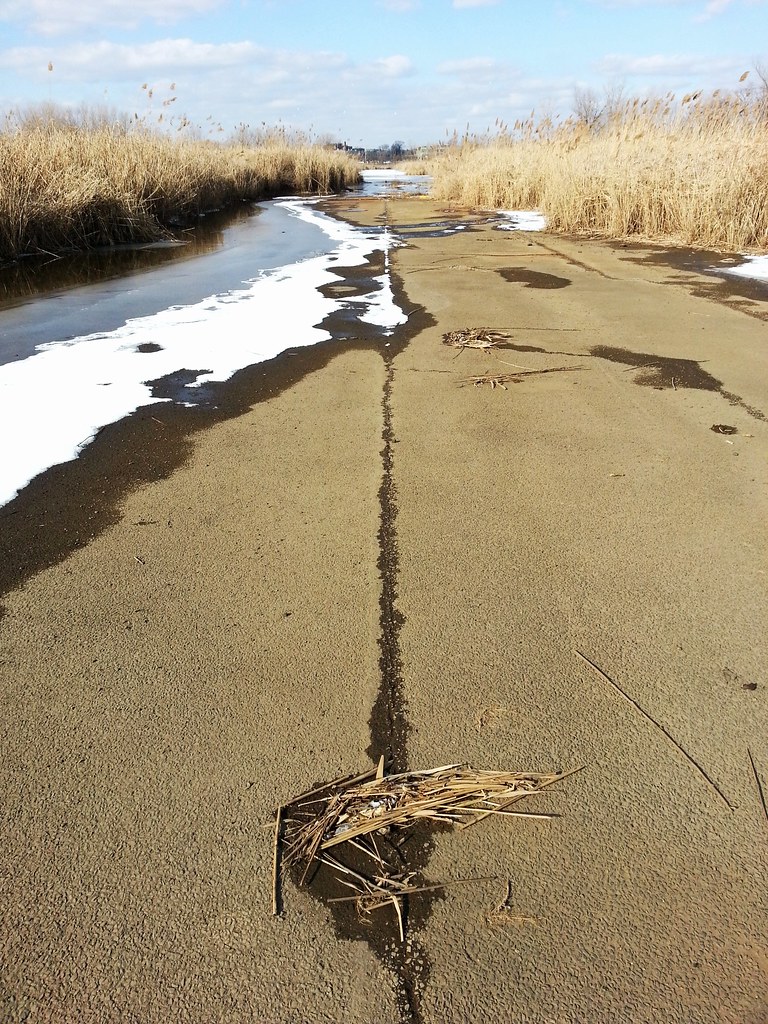
Opened in 1927, this was once a bustling airport in the days before LaGuardia. It later served as a base for blimps and skywriting planes before closing its gates for good in 1984. Many proposals for its reuse have come and gone in the years since, the city's inaction complemented nicely by nature's reclamation of the area as marshland (check out the aerial view). Other than the runway, there are few traces of the airport to be found; the old hangars hung in there for more than two decades, but were finally demolished a few years ago.

One of many ornamental pieces sprucing up an abandoned homeless campsite at Flushing Airport
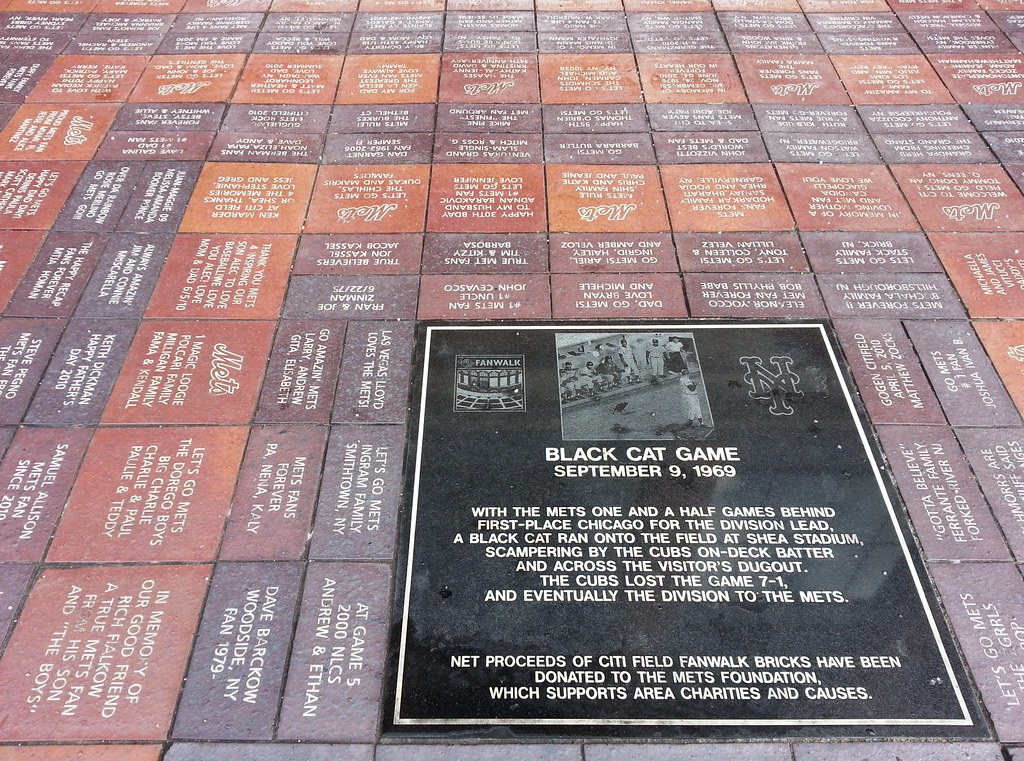
Out on the walkway in front of Citi Field, amid a swarm of thousands of personalized bricks, sit a dozen or so granite plaques (hopefully all correct by this point) memorializing notable events in Mets history. The one pictured recalls a game between the Mets and the Cubs that took place during the heat of the 1969 pennant race. The first-place Cubs had faltered late in the season, and had watched their mid-August nine-game division lead dwindle to a mere game-and-a-half advantage over the red-hot Mets by September 9. As an editor at The Week magazine remembers it:
On the afternoon of Sept. 9, 1969, during a crucial game between the Chicago Cubs and the New York Mets, a black cat appeared on the field at Shea Stadium. From my seat in the upper deck, I watched the mysterious cat circle Cubs third baseman Ron Santo, awaiting his turn at bat. As 56,000 people began to point and cheer, the cat padded directly up to the Cubs' dugout steps. There it stopped, and seemed to fix its gaze on manager Leo Durocher. A roar of exultation filled the stadium. The game stopped, as the players all stopped to look at the black cat looking at Leo. It was just a cat, of course, but after that none of us doubted that the first-place Cubs were doomed. The Mets beat the poor cursed Cubbies that day, and the next. The Cubs fell out of first place for good, as the Mets, with fairy dust on their spikes, went on to win the World Series.

This spacious trunk line is being installed beneath 126th Street, the dividing line between Willets Point and Citi Field. According to one of the workers, the rest of the Iron Triangle will remain sewerless, presumably until the auto repair shops are leveled to make way for New York's "next great neighborhood", when and if that ever happens.
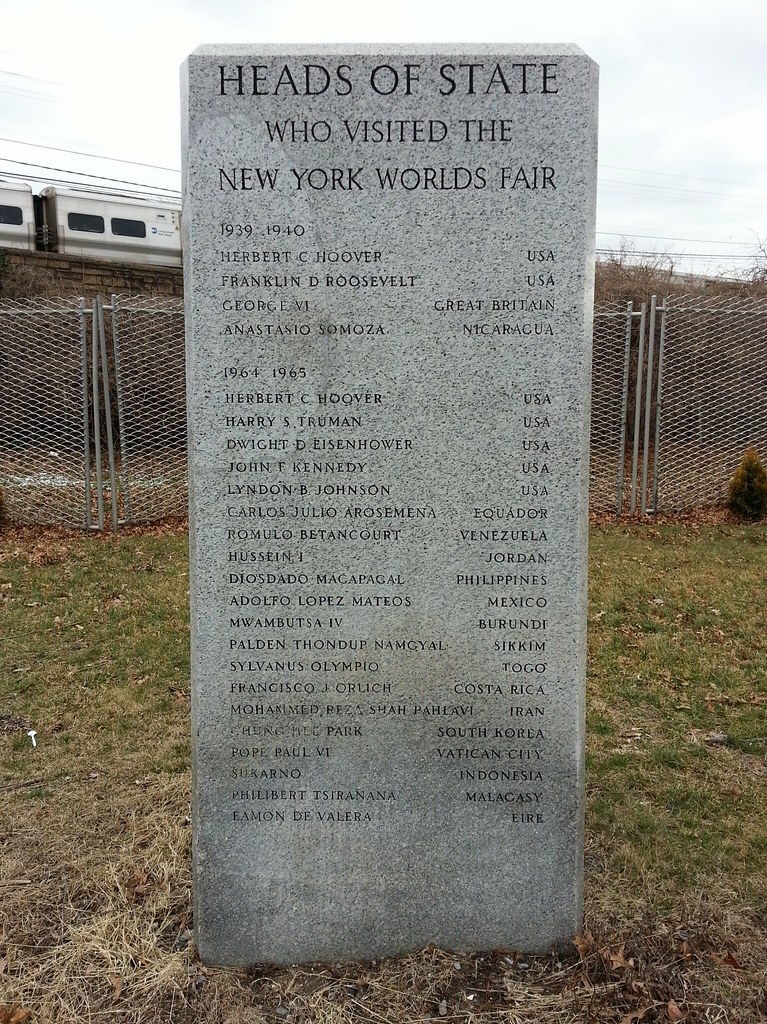
"I told you Palden Thondup Namgyal, Chogyal of Sikkim, visited the '64-'65 World's Fair!"
(This column is located in Flushing Meadows-Corona Park, at the former New Amsterdam Gate entrance to the '64-'65 Fair.)

For a haircutting establishment to earn membership in the Mozt Auguzt Fellowzhip of Barberz, it must substitute a Z for an S, at least once, somewhere in its name. This shop doesn't meet that requirement — "zzang" is simply a Korean slang term meaning "best" — but I still think it dezerves some attention.

This sign, dating back to a public awareness campaign from the waning days of the Giuliani administration, offers a reminder of the controversial policy the mayor instituted in 1999, allowing police to seize the car of anyone arrested for DWI. In those days, the NYPD would often retain an impounded vehicle without due process for months or years (if not permanently) before legal proceedings were held to determine the validity of the seizure. This practice was eventually ruled unconstitutional, and a process was put in place to remedy the situation, offering owners a prompt opportunity (known as a Krimstock hearing) to argue for the return of their vehicle. The police are required to inform drivers of confiscated cars about their right to a Krimstock hearing, but apparently that doesn't always happen.
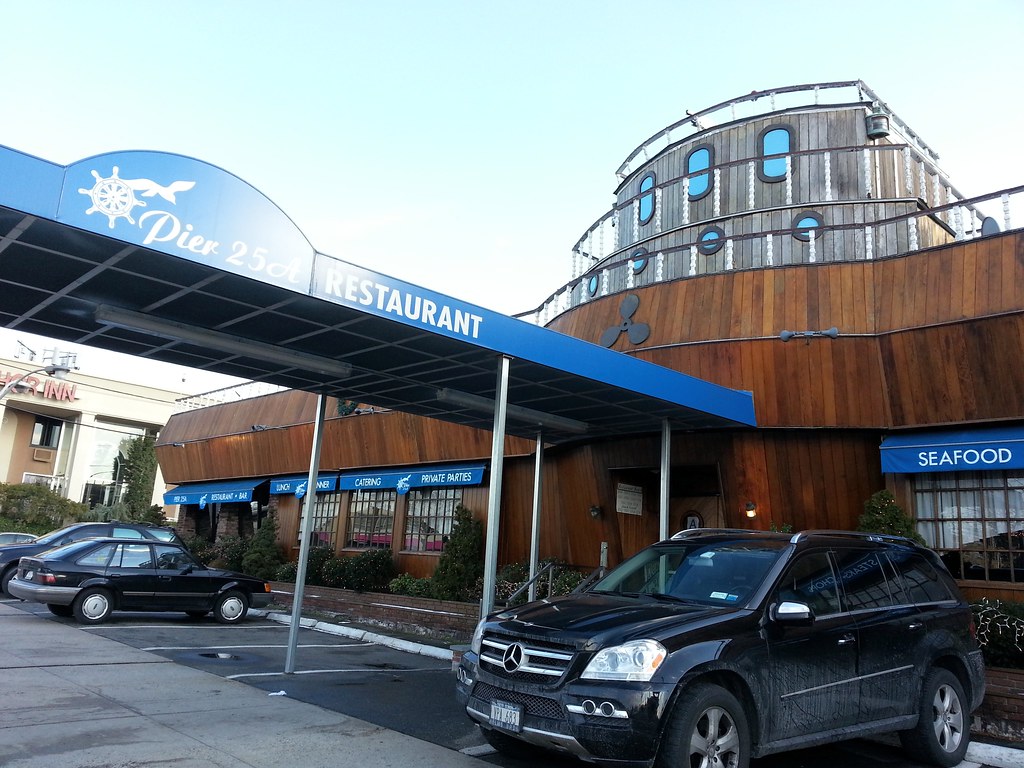
A nautical-themed eatery on Northern Boulevard, a.k.a. State Route 25A

